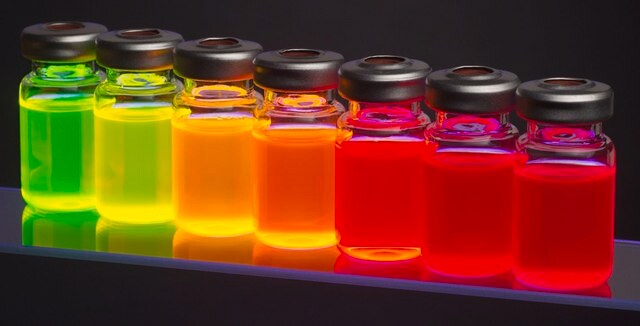662356
Lumidot™ CdSe
480, core-type quantum dots, 5 mg/mL in toluene
Synonym(e):
Organically stabilized cadmium selenide quantum dots in toluene
About This Item
Empfohlene Produkte
Form
dispersion
Konzentration
5 mg/mL in toluene
Partikelgröße
2.1-2.3 nm
λmax
455-465 nm
Fluoreszenz
λem 475-485 nm FWHM 24 nm
Lagertemp.
2-8°C
InChI
1S/Cd.Se
InChIKey
AQCDIIAORKRFCD-UHFFFAOYSA-N
Suchen Sie nach ähnlichen Produkten? Aufrufen Leitfaden zum Produktvergleich
Allgemeine Beschreibung
Anwendung
Hinweis zur Analyse
Sonstige Hinweise
Rechtliche Hinweise
Signalwort
Danger
Gefahreneinstufungen
Aquatic Chronic 2 - Asp. Tox. 1 - Flam. Liq. 2 - Repr. 2 - Skin Irrit. 2 - STOT RE 2 - STOT SE 3
Zielorgane
Central nervous system, Respiratory system
Lagerklassenschlüssel
3 - Flammable liquids
WGK
WGK 3
Flammpunkt (°F)
39.2 °F
Flammpunkt (°C)
4 °C
Persönliche Schutzausrüstung
Eyeshields, Faceshields, Gloves, type ABEK (EN14387) respirator filter
Hier finden Sie alle aktuellen Versionen:
Besitzen Sie dieses Produkt bereits?
In der Dokumentenbibliothek finden Sie die Dokumentation zu den Produkten, die Sie kürzlich erworben haben.
Unser Team von Wissenschaftlern verfügt über Erfahrung in allen Forschungsbereichen einschließlich Life Science, Materialwissenschaften, chemischer Synthese, Chromatographie, Analytik und vielen mehr..
Setzen Sie sich mit dem technischen Dienst in Verbindung.









